6 steps to describe a business process and scope process problems
Written by Andrea
5 July 2023 · 8 min read
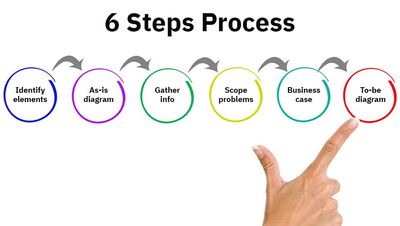
Efficient business processes are essential for organizations to function effectively and achieve their goals. These processes are the backbone of any company and govern the flow of tasks, data, and resources. However, even the most well-designed processes can encounter problems and challenges, hindering productivity and effectiveness. Thus, identifying and resolving business process problems is critical to ensure the smooth functioning of any organization.
In this blog post, we'll study the steps project teams need to go through to get a good overview of an existing business process and identify any areas for possible improvement. We'll discuss the key elements of describing a business process and how to scope business process problems.
For this discussion, let's assume that the process in scope is a pizza delivery process.
Step #1 - Identify the main elements of the process
A good starting point in describing a business process is asking management about the nature of the process. Most project teams start with the question, “What’s the name of the process?”. On this point, it’s recommended to define the name of the business process using a verb-noun phrase instead of a noun-noun phrase. For example, the name of a pizza delivery process will be “Deliver pizza” instead of “Pizza delivery.”
Once the process has a proper name, the project team has to define the input that triggers the process, the output that signals its successful completion, and all the main sub-activities of the process. So, the pizza delivery process can start when customers call to order pizzas and end when customers receive their orders. Additionally, the process may include the following sub-activities:
- the pizza vendor receives the calls and creates the orders,
- the pizzeria prepares the food,
- the delivery manager schedules the delivery and groups the orders by city areas so that each delivery run is as efficient as possible,
- a delivery vehicle brings the orders to the customers.
Step #2 - Draw an initial process flow diagram
After the project team has identified the main elements of the business process, they need to draw a simple process flow diagram illustrating the as-is process situation.
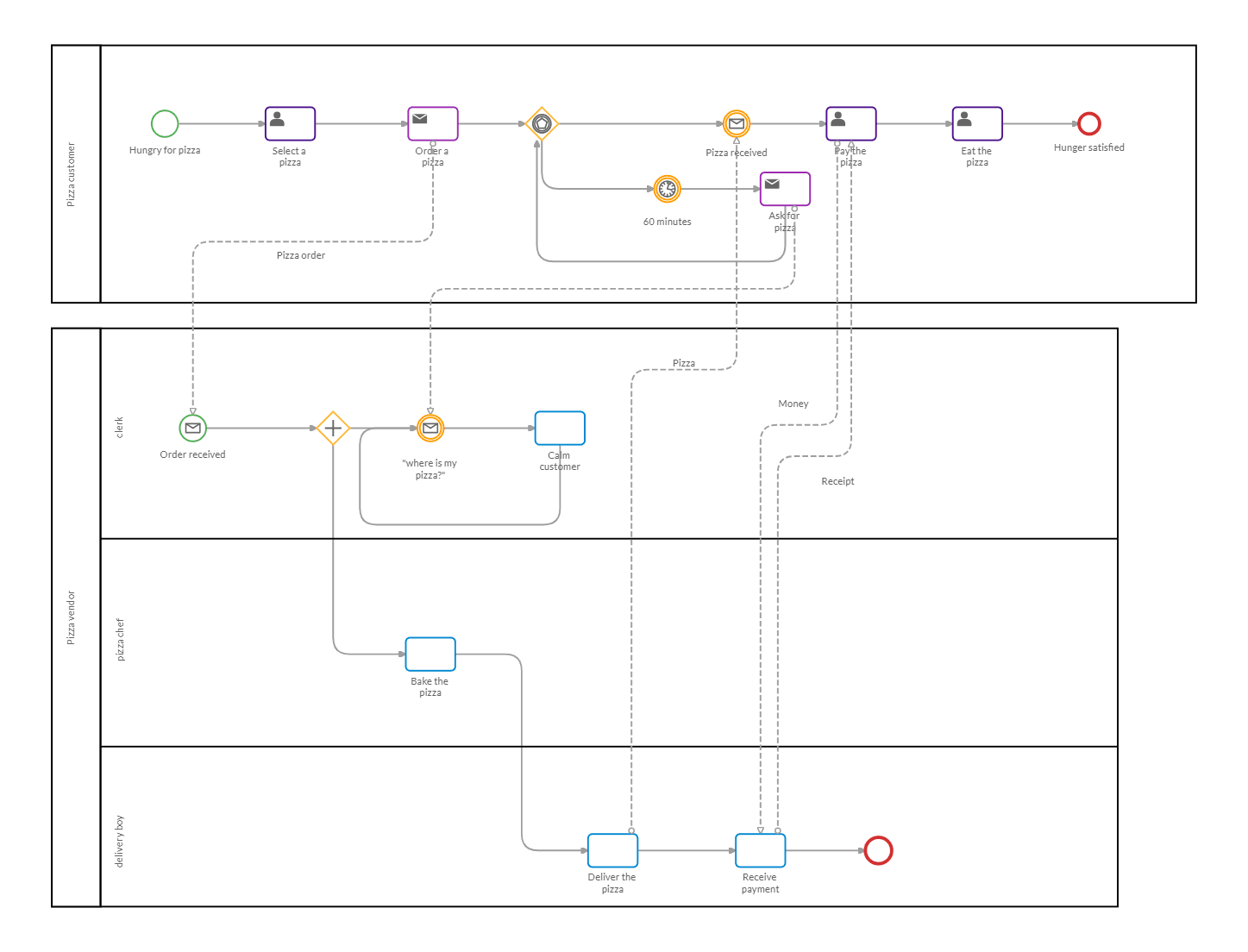
The process flow diagram can provide the project team with a very precise and detailed way to approach the analysis of the existing process. It can also help them identify all existing internal process flow or day-to-day management issues. The as-is process flow diagram includes all the steps, activities, inputs, outputs, interactions and decision points between individuals or systems. It captures the process as it is at a specific point in time, without any modifications or improvements.
On this note, the BPMN 2.0 specification is quite useful for mapping the as-is situation of both simple and complex business processes. It allows project teams to easily visualize business processes, collect data and communicate effectively with internal and external stakeholders.
Step #3 - Gather information about the process and its problems
The next step is to determine the goal of the process improvement project. Often, management is asked numerous questions – for example:
- Does the diagram depict the as-is process?
- Is the maintenance of delivery trucks necessary for the analysis?
- Are there problems with the phone system?
- Should the food preparation process be considered?
The project team must gather as much information as possible about what management thinks the problem is. Then, they need to collect more information to determine if their understanding is correct. Often, the real problem differs from what management believes it to be. For example, management may think the issue relates to how deliveries are scheduled and may not realize that the frequent lack of available vehicles makes scheduling inefficient.
Once the team has an initial description of the problem, they must talk with all the stakeholders involved to refine their understanding of the process and identify all possible problems. Stakeholders could be customers, employees, managers, suppliers, and anyone else managing a process that interacts with the process in scope.
Step #4 - Create a process scoping diagram
Before talking with all the stakeholders, the project team needs to create a process scoping diagram. This diagram will help the team analyze the relationship between the process and its external environment. It will also facilitate the collection and record of information about all the possible external problems that might impact the project.
In essence, the process scoping diagram consists of the following elements:
- Process area: the center of the diagram where the team needs to place the process(es) they intend to analyze.
- Input area: the area to the left of the process area that contains information about process inputs.
- Output area: the area to the right of the process area that contains information about process outputs.
- Control area: the area above the process area is for guides or controls (e.g., individuals or documents) that manage, constrain, or control the activities of the processes in the process area.
- Enabling area: the area below the process area contains information about the support or enabling processes or resources that support the execution of the processes in the process area.
Additionally, the inputs and outputs can link the process in the process area to individuals, documents, systems, organizations, products, or even other processes.
Process scoping diagrams are useful for understanding process problems because of the following reasons:
- it works well for both small and large problems,
- the diagram provides a lot of space in which to record information,
- it gives an overview of how the project scope may change.
An alternative to a process scoping diagram is the cause-effect diagram. However, the latter is usually suitable for understanding only minor problems – for example, customers complain about the pizza delivery time.
Going back to the pizza delivery process, the central area of the process scoping diagram will include the label “Deliver pizza” and a list of the main subprocesses. The project team can make notes in the process area or in the areas surrounding the process area. These notes should reflect things or new problems they discovered about the relationship between the process and its environment when they interviewed the stakeholders.
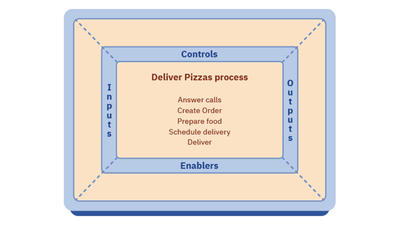
And talking about business process problems that the project team might have discovered, here are a few practical examples:
- The pizzeria doesn’t have enough order takers, and customers sometimes must wait 4–5 min to make their order, which leads to some of them hanging up.
- Some routes take more than 30 minutes to be run, so the food is delivered cold.
- Every so often, there aren’t enough delivery people available when orders “surge.”
On this note, it’s advisable to create a process analysis worksheet. The latter usually consists of six columns: subprocess, nature of activity, manager, employees, measure of success, and problems. The process analysis worksheet can give a clear picture of the different problems and what parts of the process and measures of success they relate to. Once created, the notes from it can be transferred to the process scoping diagram.
Afterward, it’s time to indicate how critical the different problems are by looking at the process scoping diagram. Problem criticality depends on the goals of the project. So, something that can be ignored in one project might become the central issue in a different project.
Finally, the initial scope of the process and its associated day-to-day management processes may change. It’s possible that the project team decides to expand the scope and analyze and redesign processes that lie outside the original scope. In such a case, the process scoping diagram can help document and explain the reasons for expanding the scope of the process improvement project.
Step #5 - Create a case for a business process change project
Next, the project team needs to create a case for a business process change project. The latter should reflect the information in the process scoping diagram and what's presented in the gap model if such was created before the team started working on the process description. The steps in defining a preliminary business case include the following:
- Define the as-is process considering what’s in and out of scope.
- Determine what the as-is process is or isn’t doing now and suggest concrete measures.
- Define the to-be process and what it should or shouldn’t do when completed, i.e., what’s the goal of the project?
- Clarify how the capability or performance gap will be bridged, i.e., what does the creation of the new business process involve?
- Consider what bridging the capability or performance gap will cost in terms of resources.
- Consider all risks and opportunity costs and revise if necessary.
Overall, the business case should describe the as-is business process and suggest the type of changes required to create a new, improved process that is able to deliver the desired new measures.
Management should approve the business case before the project team can continue with the analysis of the as-is process. In some cases, management might decide that the process improvement project should be discontinued because it will be too costly or take too much time.
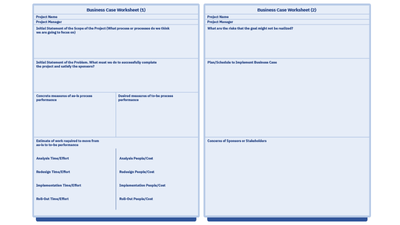
Step #6 - Draw a diagram of the to-be business process
By now, the project team should clearly understand the main business process problem. So, the next and last step is to use the initial as-is process flow diagram to look at the internal workings of the process and analyze it. Consequently, the project team may generate several alternative workflows and compare them. These alternative workflows represent the could-be processes and help the team arrive at the new to-be process.
A to-be process flow diagram suggests how the project team has decided to improve the as-is business process. It outlines the ideal flow of tasks, inputs, outputs, and interactions. It addresses the identified process issues and desired outcomes. Simply put, the to-be diagram illustrates the envisioned future state of the business process to stakeholders after all improvements have been implemented.
For example, a to-be diagram of the pizza delivery process could illustrate the following new sub-activities:
- Customers use a mobile application to interact with the pizzeria.
- When customers interact with the company via the app, the information goes directly into the customer database.
- When ordering pizzas via the mobile app, customers arrange the payment before they receive their order.
- Customers use the app to access a variety of information related to the status of their order.
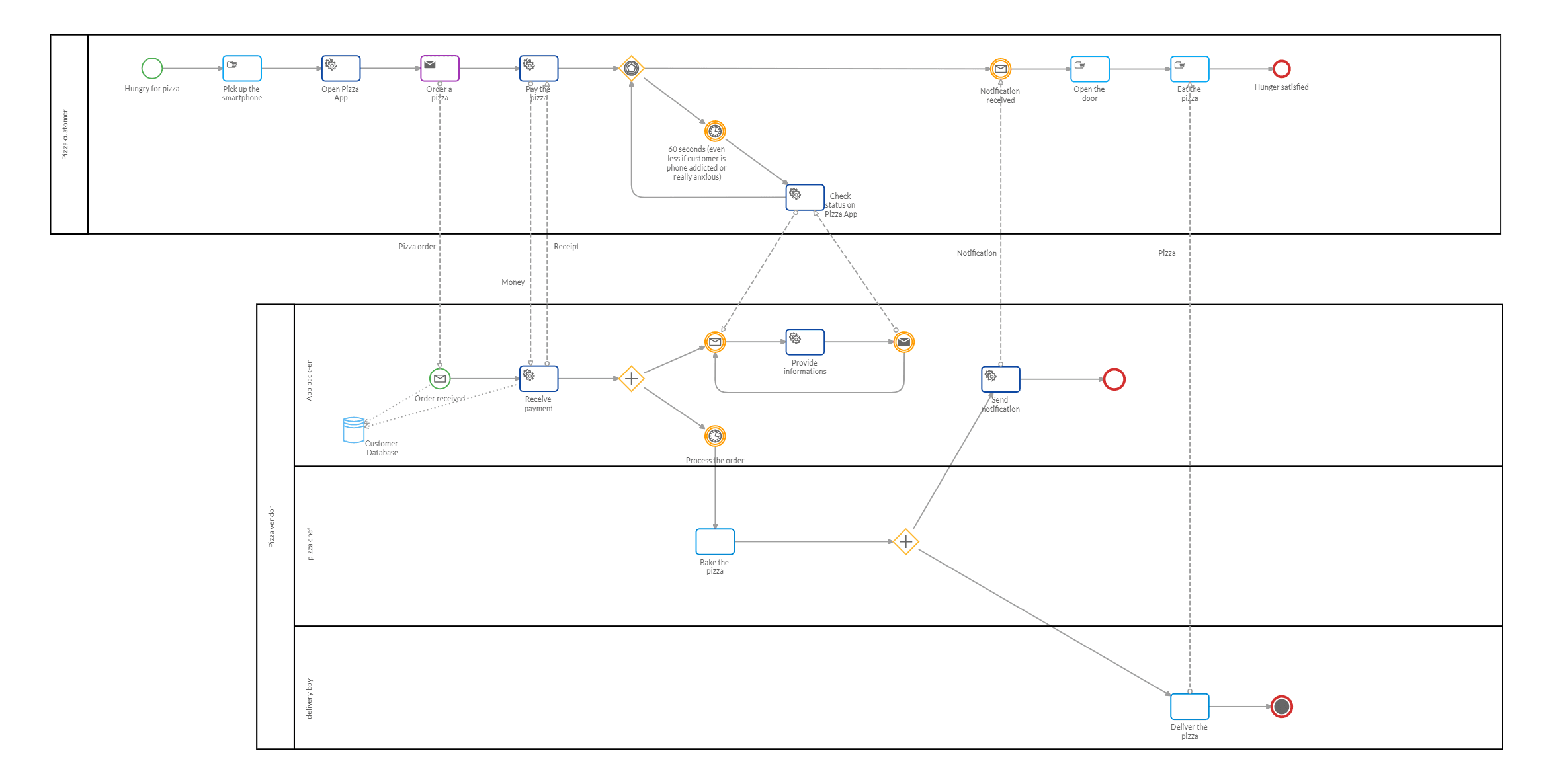
All the above-listed activities have simplified the customer’s process and removed several sales activities. Furthermore, the introduction of a mobile application has also solved one of the possible main process problems mentioned earlier – i.e., the pizzeria loses customers because it doesn’t have enough order takers.
Drawing process flow diagrams with Cardanit
Cardanit is a cloud-based, user-friendly BPMN editor allowing project teams to draw process flow diagrams of as-is, could-be, and to-be business processes. With Cardanit, they can easily:
- Add process elements to their diagram representing the tasks, events, and gateways in their business process.
- Use appropriate connectors - for example, sequence flow arrows - to connect activities and other process elements together and define the flow of the process.
- Add gateways to represent decision points or diverging/converging paths in their business process.
- Connect incoming and outgoing sequence flows to gateways.
- Include events to illustrate the start, intermediate, and end points of their process.
- Add data objects if the business process involves data inputs, outputs, or storage. These can be documents, files, or any other relevant data items.
- Use the auto-layout feature to arrange the elements in a logical manner quickly.
- Customize the appearance of the various BPMN elements using different colors, shapes, and text formatting options.
- Save and export the process diagram in PNG or PDF format.
Additionally, Cardanit also facilitates project coordination and collaboration. Project teams can review and revise their process flow diagrams from anywhere at any time to ensure clarity and accuracy before sharing them with others.
In conclusion
Organizations can gain clarity and transparency, reorganize operations, and drive long-term success by understanding how to describe a business process and effectively scope business process problems.
Describing a business process begins with mapping out its activities, documenting the necessary inputs, and defining the expected outcomes. This provides a clear view of the existing process, making it easier to communicate, analyze, and improve upon.
When it comes to scoping business process problems, it's essential to examine the process from end to end to identify possible inefficiencies and bottlenecks. Recognizing existing problems can allow organizations to prioritize their efforts and implement targeted solutions such as redesigning the process flow, introducing software applications, and improving communication channels.
Further reading
Free BPMN 2.0 cheat sheet for easy process modeling
BPMN in public administration: Translating law-driven procedures in BPMN diagrams
Supply chain process management: Modeling end-to-end processes with BPMN
Andrea is the collective pseudonym for the group of people working behind Cardanit, the Business Process Management Software as a Service of ESTECO. The group has different backgrounds and several decades of experience in fields varying from BPM, BPMN, DMN, Process Mining, Simulation, Optimization, Numerical Methods, Research and Development, and Marketing.
Andrea is the collective pseudonym for the group of people working behind Cardanit, the Business Process Management Software as a Service of ESTECO. The group has different backgrounds and several decades of experience in fields varying from BPM, BPMN, DMN, Process Mining, Simulation, Optimization, Numerical Methods, Research and Development, and Marketing.
Our business case worksheet can help you describe the as-is business process and suggest the changes required to create a new, improved to-be version of it.
Want to start a business process change project?
Our business case worksheet can help you describe the as-is business process and suggest the changes required to create a new, improved to-be version of it.
Want to start a business process change project?
Our business case worksheet can help you describe the as-is business process and suggest the changes required to create a new, improved to-be version of it.
